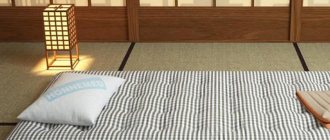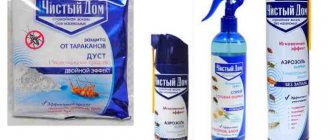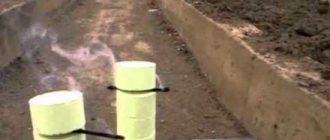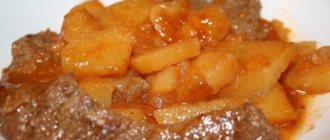It is impossible to beautifully cut vegetables into slices or other shapes without having a sharp knife at hand. Over time, becoming dull, it will complicate the performance of simple tasks. It will take much more time to complete them, and it will simply be impossible to achieve the same aesthetics and beauty. Using a blunt object increases the likelihood of injury; applying additional force will damage the ingredients. A knife, like any other equipment, requires periodic maintenance. Return the former sharpness with the help of sharpening musat. They have long turned into faithful assistants to professional chefs and simply those who like to cook at home.
What is knife polish
Musat is a tool that looks like a metal or ceramic rod with a plastic or wooden handle. To prevent hand cuts, there is a guard located between the handle and the working part of the tool.
The sharpening base of different products differs in the softness of the material. The surface of the rod can be smooth or rough. The advantage of musats is their magnetized surface. Thanks to this feature, metal particles do not fly apart, but remain on the tool shaft.
Musat is used for straightening blades with a hardness above 50 HRC, otherwise the tool removes too much metal. Ineffective at hardness levels greater than 60 HRC.
Useful video
Watch the video on how to make musat yourself:
Similar articles
- Whetstone: which one is better to choose based on grain size...
What is a whetstone, whetstone. How to choose the right one for kitchen knives, the best by manufacturer. What main parameters need to be taken into account - grain size, size, composition. What do water-based, oil-based, ceramic, abrasive stones mean? How to properly care for a sharpener. Is it possible to make it yourself and from what? Read more - Hunting knives: main and best types, sizes, how...
What are the best hunting knives for both professionals and beginners? What are the parameters of knives for hunting: sizes, sheaths, steel, shape. How to choose a knife, make it yourself. How much does a knife cost, how to buy a good one for hunting, fishing and tourism. Read more
- Knife stand: how to make it yourself...
What types of knife stands are there, is it different for kitchen, decorative, and souvenir ones. How you can make a knife stand with your own hands from plywood, with filler, decoupage according to the drawings. What are the differences between a shelf, stand, glass, brush stand, holder, their pros and cons. Read more
- Knife handle: depending on size, thickness, how...
What kind of knife handle can be based on the main indicators - thickness, size, method of decoration. How to make a handle for a knife, which drawing is suitable. How to attach a blade to a handle. Is there a knife without a handle? Read more
- Switchblade: main types - American, Soviet...
What kind of switchblade is there? What are the most popular types among Russian, Soviet, American manufacturers. Some knives with a secret, some frontal, push-button. Is it a melee weapon or not? What are the advantages of an automatic switchblade. Read more
Types of devices by shape
Products may have different cross-sectional shapes. Possible options:
- Round. The tool is lightweight.
- Oval. More convenient to use, have greater contact with the surface of the knife.
- Faceted. There are flat, tetrahedral and D-shaped. In the first case, linear contact with the blade is ensured; in the second and third cases, special sharpening is carried out due to the combination of the functions of a flat and volumetric tool.
There is also a tabletop V-shaped musat. It consists of 2 rods that are installed on the base at the desired angle.
Musat with a round cross-section.
Musat with an oval cross-section.
Flat Musat.
D-shaped section of musat. Tabletop V-shaped grinder.
Recommendations for selection
According to professionals, the best ones are those with a polished working surface, on which you can see your own reflection:
- The magnetized tip of the product makes work easier. It helps to quickly remove metal dust deposited on the surface of the knife.
- To avoid injury to your fingers during operation, there must be a special guard between the rod and the handle.
- Ceramic musats are considered the most durable. They sharpen knives perfectly, removing a minimal layer of metal. The disadvantage of these products is their high fragility. After falling or hitting the surface, a crack or chip may appear.
When choosing musat, you need to take into account the grade of steel from which the blade is made, as well as its hardness. Now you know what musat is and why it is needed in everyday life.
There must be a guard for safety
Choose a magnetized tip
The best is ceramics
Types of musats by material
Musats are made of metal or ceramics and may have an abrasive coating. Each product has different performance characteristics.
Metal
The rod is made of hard steel (chrome vanadium), characterized by resistance to corrosion. It can be smooth or have notches of various sizes.
Aluminum rods are less common. Such tools are designed to correct bends and have low abrasive properties.
Diamond
The shaft has a rough texture, so the tool quickly returns sharpness to a dull blade. It is made of chrome-plated steel, onto which diamond sand is applied.
Diamond polish is intended for finishing leveling or repairing minor damage on the edge of a knife.
The working part in most products has an oval shape, which eliminates the formation of indentations on the blade and prevents the formation of notches when pressed hard. After processing, the metal holds its edge well.
Ceramic
Rods made entirely of ceramic are lightweight but fragile. Therefore, musats with ceramic coating on a metal base are more often used. The cross-section in this version is round or oval. A special feature of the products is the presence of surfaces with varying degrees of abrasiveness.
Ceramic coated musat is often used for large wide blades.
Mixed
The tool has 2 types of surface: smooth on one side and abrasive on the other. This combination allows you to create a high level of blade sharpness.
The mixed musat has a ribbed surface on one side for straightening the knife.
What are they?
The characteristics of the device depend not only on the material, but are influenced by several factors. These include form. It defines the main purpose.
- Round. Common group. The main advantage over competitors is minimal weight.
- Oval. Received the largest area of contact during interaction. Choice for beginners and chefs with little experience.
- Flat. An effective solution due to the increased contact area. Among the disadvantages, increased weight is noted.
- Square. Suitable for 2 different sharpening levels. The degree of abrasiveness of the edges depends on the manufacturer. Rough handling may damage the tip.
- V-shaped. A unique group including models with 2 or 4 rods. They are fixed to the base at the required angle. Easy to use, as you do not need to maintain the required sharpening angle.
Types by function
Musat is intended for straightening a knife, but some types of tools can be used for sharpening.
For grinding
Steel grinders, which have a smooth surface, are distinguished by gentle polishing and remove a small amount of metal. For straightening, notched rods are also used, which have a velvety texture due to the large number and low height of the ribs. A rough cut is used if the edge has not only been bent, but also polished when grinding hard steels.
The coarser the rod, the more intense the material removal from the blade. To polish blades made of low-hardness steel, it is recommended to use a tool with a smooth ceramic surface. Sanding is carried out with light pressure.
For initial sharpening
Abrasive musats are suitable for sharpening.
Ceramic grinding stone for initial sharpening of knives.
These include the following types:
- With rough ceramic coating. Not for use on hard blades.
- Diamond.
The abrasive surface acts as a grindstone. The softer the material of the cutting part of the knife, the finer the spraying should be. The amount of metal to be ground depends on the grain size and the pressure applied.
Must is not used for deep sharpening, because... may damage the blade. For this purpose, it is recommended to use special machines or sharpening stones.
What is it like?
What is knife polish, and why is it needed in general? Musat is a device that allows you to make a sharp cutting edge. To keep the knife blade sharp at all times, use a special sharpening material. This tool helps to give an attractive appearance to the cutting tool. The musat knife does not require additional sharpening. It is always in working order. Must for knives is sold at any hardware store.
When sharpening occurs using other methods, a layer of coating is removed from the blade, which reduces its service life. Musat for sharpening knives allows you to maintain the ideal appearance of the metal surface, which will serve for a long time. In its proper form, musat is a device with a shape similar to a round file. The hardness of the device necessarily exceeds the hardness of the knife.
Depending on the area of application, they are divided into groups:
- household - the cheapest tools, 18-23 cm long. Used for sharpening soft kitchen knives;
- universal devices 26-29 cm long. They are equipped with high-quality cutters. The price of such products is much higher. Suitable for straightening hard blades;
- professional - the tool is distinguished by its dimensions: 26-36 cm. To cut meat at home, knives are trimmed with thin musat (32-36 cm). Cooks use short musats (26 cm).
The Musat sharpener differs from similar designs in its appearance and structure.
How to choose a good knife polish
When choosing a musat, you need to pay attention to the presence of a guard, which makes the use of the tool safe.
It is important to evaluate quality performance:
- Regardless of the type of material from which the musat is made, the surface of the rod must be uniform. The presence of small defects and roughness on smooth steel is unacceptable. When processing a knife, they can damage the blade. The surface structure must have uniform density.
- If the rod has notches, they should be evenly and parallel, without protrusions or notches.
- The diamond coating should not crumble or crumble.
- The ceramic coating should not be chipped or damaged.
- The musat should not be smaller than the blade of a knife (the best option is 5 cm longer). Universal products range in size from 26 to 29 cm (often included in knife sets). For home use, a length of 18 to 20 cm is often sufficient. Longer products (up to 36 cm) are intended for professional use.
One of the requirements that professional chefs have for tools with a smooth steel surface is that they have a polish that allows you to see your own reflection.
Caring for musats
Musats are unpretentious in care and storage, but you should still follow certain recommendations:
- Store separately from cutlery and tools so that metal objects do not touch the rod.
- Wash by hand, machine washing is prohibited.
- Wipe with a dry, lint-free cloth.
- Use for its intended purpose - for knives with a certain hardness and type of steel (for example, metal grinding is not suitable for ceramic knives - upon contact, the rod will be scratched and erased, but the blade will remain dull).
How to use musat
You can edit using musat in different ways, changing the location of the knife and tool. There are 2 classic techniques: suspended or supported on a surface. In both cases, the edge is processed on both sides of the blade alternately. The location of the cutting edge down or up also changes.
It is important to sharpen the knife correctly with musat: the blade should be located in relation to the rod at an angle of up to 20-30 degrees. Sliding at one level is less efficient than moving the working part of the knife along the entire length of the rod.
In midair
The method involves placing the tool in suspended position. The algorithm of actions is as follows:
- One hand holds the musat in a horizontal position.
- In the other hand there is a knife. The blade (from the handle) is applied with the tip up to the end of the rod.
- When the hand is moved down, the blade lowers and slides along the shaft towards its base (from the handle to the tip). Only the hand should move, because... When moving the knife, the likelihood of injury from the shifting tip increases.
- The hand holding the musat does not move.
It is safer to place the musat slightly downward (away from you). In this case, the blade is applied from the handle to the base of the rod at the guard. The knife is lowered so that its cutting part slides along the entire length of the musat to the tip. The risk of cutting yourself is minimal, because the movement is directed away from the hand with the tool.
The “In midair” position assumes that work with musat is carried out in weight without additional support.
Calmly
It is assumed that there is a support on which the musat is held vertically with the handle up.
Editing is carried out according to the following algorithm:
- The working part of the knife is applied with the base at the handle under the musat guard. The recommended angle is 10-15°.
- The hand with the knife is pulled back, while the blade slides down the shaft, moving towards the tip. The movements are reminiscent of cutting bark from a branch.
This is a safe method; causing injury with a blade is almost impossible. For support, it is important to choose surfaces that do not slip.
Correct sharpening
Before learning the rules on how to use knife polish, you need to consider that this tool is intended exclusively for smooth blades. They should not be used on wavy or serrated blades.
Sharpening with musat does not thin the blade, but only straightens it. This is what distinguishes the tool from other sharpening devices and devices. Thanks to this feature, you can dry the knife before each use, since even too frequent treatment will in no way affect the service life of the kitchen knife.
Expert opinion
Soloviev Pavel Viktorovich
Designer with many years of experience and experience.
It is possible to achieve the desired result when sharpening with musat only if you follow the rules for using the tool. When carrying out the procedure, it is important to adhere to a certain sequence of actions:
- First you need to place the end of the musat on a surface that will not slip. An ordinary kitchen towel, which will first be spread on the table, is perfect for this purpose.
- During the sharpening procedure, the knife must be held at an angle of about 200 degrees.
- The cutting part of the knife needs to be drawn across the musat. Start from bottom to top, then forward and backward.
- The same actions must be done on the other side of the tip. You should not put a lot of effort and put pressure on the blade when sharpening - this may result in a notch that cannot be corrected.
To achieve perfect blade sharpness, you only need to swipe the tool one to several times. If a diamond grinder is used, the blade is sharpened the first time; the ceramic rod requires repeating the movements 2-5 times on each side.
Blade Sharpness Determination
You can check the sharpness of the cutting edge with your finger, but do not run it along the knife. The blade should be moved across the finger. This method requires training and experience.
Checking the quality of blade editing on paper.
There are other reliable and safe methods:
- Paper. Holding the sheet suspended, you need to cut a thin strip from it. A properly sharpened knife carefully cuts through paper without creasing it. The sharper the edge, the thinner the strip you can cut.
- Tomatoes. The sharpened cutting edge easily cuts the tomato under the influence of the weight of the blade and does not crush the skin.
- Hair. This method requires caution. It is necessary to bring the blade to the hair on your arm (against your height). If the edge is not straightened, the hair will bend. A sharp edge will cut it off.
You can also check the sharpness with your fingernail. You need to apply the knife across the growth of the nail plate. With a dull edge, the blade will slide down under its own weight. The sharp blade will leave a small notch and will be held in place. The method requires careful use; sudden movements should not be made.
Application of musat: second method
- The end of the musat is rested vertically on a table or cutting board and slightly tilted to the left by 15-25 degrees;
- The knife is placed to the right of the handle of the sharpening tool, with the cutting edge directed downward;
- To edit, begin to move from the heel to the tip of the musat towards the board or table, without touching their surface;
- We repeat the movements from top to bottom, maintaining the angle between the products;
- We continue editing until we achieve the desired result;
- After processing, rinse the knife and wipe the musat with a damp cloth, wipe the products dry.
Experts recommend using musat exclusively for preventive straightening or polishing of knives, cutters and cleavers. With regular treatment, the blade will last a long time and will not become dull. It will not help for deeper sharpening and when the blade is heavily worn. Here you will have to resort to the help of sharpening machines, whetstones, stones and other abrasive tools. How to sharpen knives, see the link for more details.











